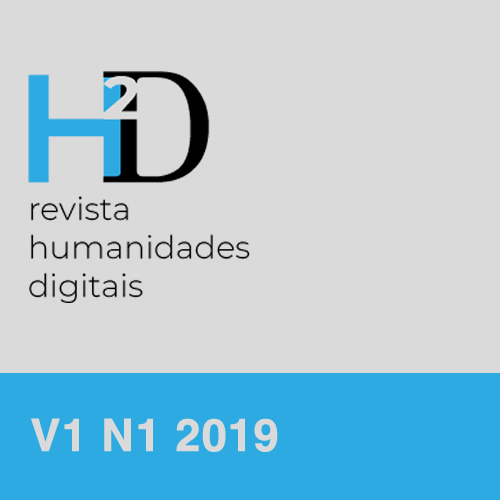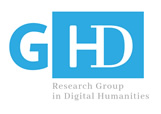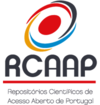Literacy of Croatian vocational school students in school assignments and texts written in new media in leisure time
DOI:
https://doi.org/10.21814/h2d.235Palavras-chave:
the language of new media, literacy, students in vocational schools, school texts, texts written in leisure timeResumo
Communication by means of new media inevitably leads to changes in language that are reflected in a new type of discourse. The main features of this discourse are the use of abbreviations, emoticons, dialecticism, anglicisms, neologisms, vulgarisms, and profanities. This way of writing, however, is often seen as writing with a lot of errors, which then have a negative influence on literacy in general and, particularly, on the literacy of young people. Therefore, during 2016, the authors of this article conducted a research study of the real literacy of young people analyzing school assignments written by students in their final years of vocational schools and their communication in new media. The 2016 research study was a follow-up study to the research study that had been carried out in 2015 with grammar school students. This new research study compared vocational school students with grammar school students in Croatia.
Downloads
Referências
Crystal, D. (2011). Internet Linguistics. London; New York: Routledge. doi: https://doi.org/10.4324/9780203830901
Dürscheid, C., Wagner, F., & Brommer, S. (2010). Wie Jugendliche schreiben. Schreibkompetenz und Neue Medien. Berlin; New York: de Gruyter.
Filipan-Žignić, B. (2012). Jezik novih medija. Split: Matica hrvatska.
Filipan-Žignić, B., Sobo, K., & Velički, D. (2012). SMS Communication – Croatian SMS Language Features as Compared with those in German and English speaking Countries. Revija za elementarno izobraževanje, 5, 5-22.
Filipan-Žignić, B. (2013). Jezik moje bake i internet. Čakovec: Matica hrvatska.
Filipan-Žignić. B. (2015). Sprache von kroatischen und deutschen Weblogs. In J. Toth (Ed.) Die Sprache und ihre Wissenschaft zwischen Tradition und Innovation. Language and its Study between Tradition and Innovation (pp. 73-84). Frankfurt am Main, Berlin, Bern, Bruxelles, New York, Oxford, Wien: Peter Lang. doi: https://doi.org/10.3726/978-3-653-04525-3
Filipan-Žignić, B., & Mošmondor, L. (2015). Jezična promjena uzrokovana novim medijem internetom. Primjer Facebooka na hrvatskom i njemačkom jeziku. In S. A. Toth (Ed.) A Magyar Tudomany napjan elhangzott horvat (es angol) nyelvü elöadasok gyüjtemenye 2013-IG, (pp. 27-45). Baja: Eötvös József Főiskolán
Filipan-Žignić, B., Legac, V., Pahić, T., & Sobo, K. (2015). New Literacy of Young People Caused by the Use of New Media. Procedia-Social and Behavioral Journal, 1, 192C, 179-186 doi: https://doi.org/10.1016/j.sbspro.2015.06.025
Filipan-Žignić, B., Kitner, E., & Sobo, K. (2016). Multilingualism of Croatian Elementary School Children on Facebook. Croatian Journal of Education – Hrvatski Časopis za Odgoj I obrazovanje, 18(2), 51-70. doi: https://doi.org/10.15516/cje.v18i0.2103
Filipan-Žignić, B., & Legac, V., & Sobo, K. (2016). The Influence of the Language of New Media on the Literacy of Young People in Their School Assignments and in Leisure. Linguistics Beyond and Within, 2, 77-96
Herring, S., Stein, D., & Virtanen, T. (2013). Introduction to the pragmatics of computer mediated communication. Berlin; Boston: de Gruyter Mouton.
Krishnamurthy, B., Gill, P., & Arlitt, M. (2008). A few chirps about twitter. In C. Faloutsos, T. Karagiannis, & P. Rodriguez (Eds.), Proceedings of the First Workshop on Online Social Networks (pp. 19-24). Seattle, WA, USA, August 18 – 18, 2008. WOSP ’08. ACM, New York, NY. doi: https://doi.org/10.1145/1397735.1397741
Schlobinski, P. (2009). Von HDL bis DUBIDODO. (K)ein Wörterbuch zur SMS. Mannheim: Duden Verlag.
Seargeant, P., & Tagg, C. (Eds.) (2014). The Language of Social Media: Identity and Community on the Internet. Basingstoke: Palgrave Macmillan. doi: https://doi.org/10.1057/9781137029317
Siever, T. (2011). Texte i. d. Enge. Sprachökonomische Reduktion in stark raumbegrenzten Textsorten. In J. v. Runkehl, P. Schlobinski & T. Siever (Eds.) Sprache – Medien – Innovationen. Bd.1. Frankfurt am Main u. a.: Peter Lang.
Storrer, A. (2001). Getippte Gespräche oder dialogische Texte? Zur kommunikationstheoretischen Einordnung der Chat-Kommunikation. In A. Lehr, M. Kammerer, K. P. Konerding, A. Storrer, C. Thimm, & W. Wolski (Eds.), Sprache im Alltag.Beiträge zu neuen Perspektiven in der Linguistik (pp. 439-466). Berlin: de Gruyter. doi: https://doi.org/10.1515/9783110880380
Tour, N. (2010). Online-Netzwerke. Eine kommunikationstheoretische, sozialpsychologische & soziallinguistische Analyse. Networx 55. url: http://www.mediensprache.net/networx/networx-55.pdf.
Vlastelić, A., & Vrbanec, S. (2014). Btw, tnx, što me lajkaš! Lol :) Istraživanje utjecaja medija na rječnik hrvatskih studenata. Standardni jezici i sociolekti u 21 stoljeću (pp. 177-194). Zagreb: Srednja Europa; HDPL.
Žic-Fuchs, M., & Tuđman-Vuković, N. (2008). Communication technologies and their influence on language: Reshuffling tenses in Croatian SMS text messaging. Jezikoslovlje, 91(2), 109-122.
Downloads
Publicado
Como Citar
Edição
Secção
Licença
Direitos de Autor (c) 2019 Digital Humanities Journal

Este trabalho encontra-se publicado com a Licença Internacional Creative Commons Atribuição 4.0.






